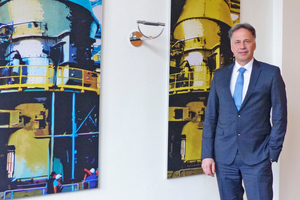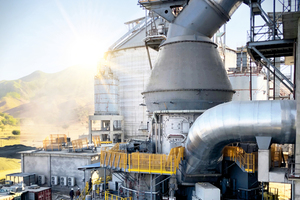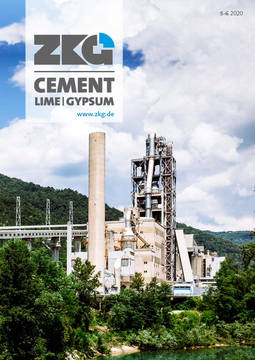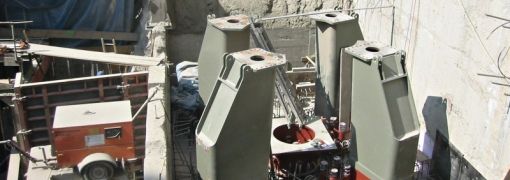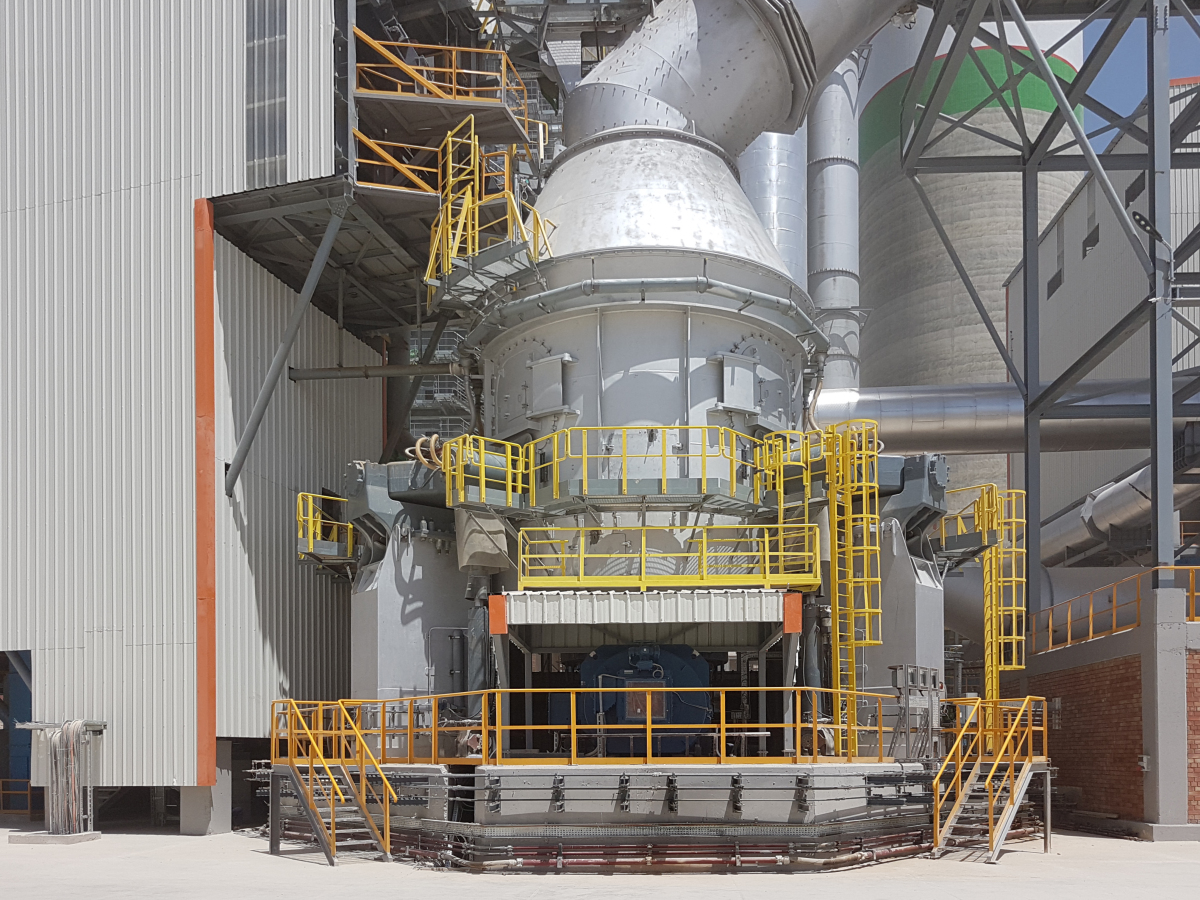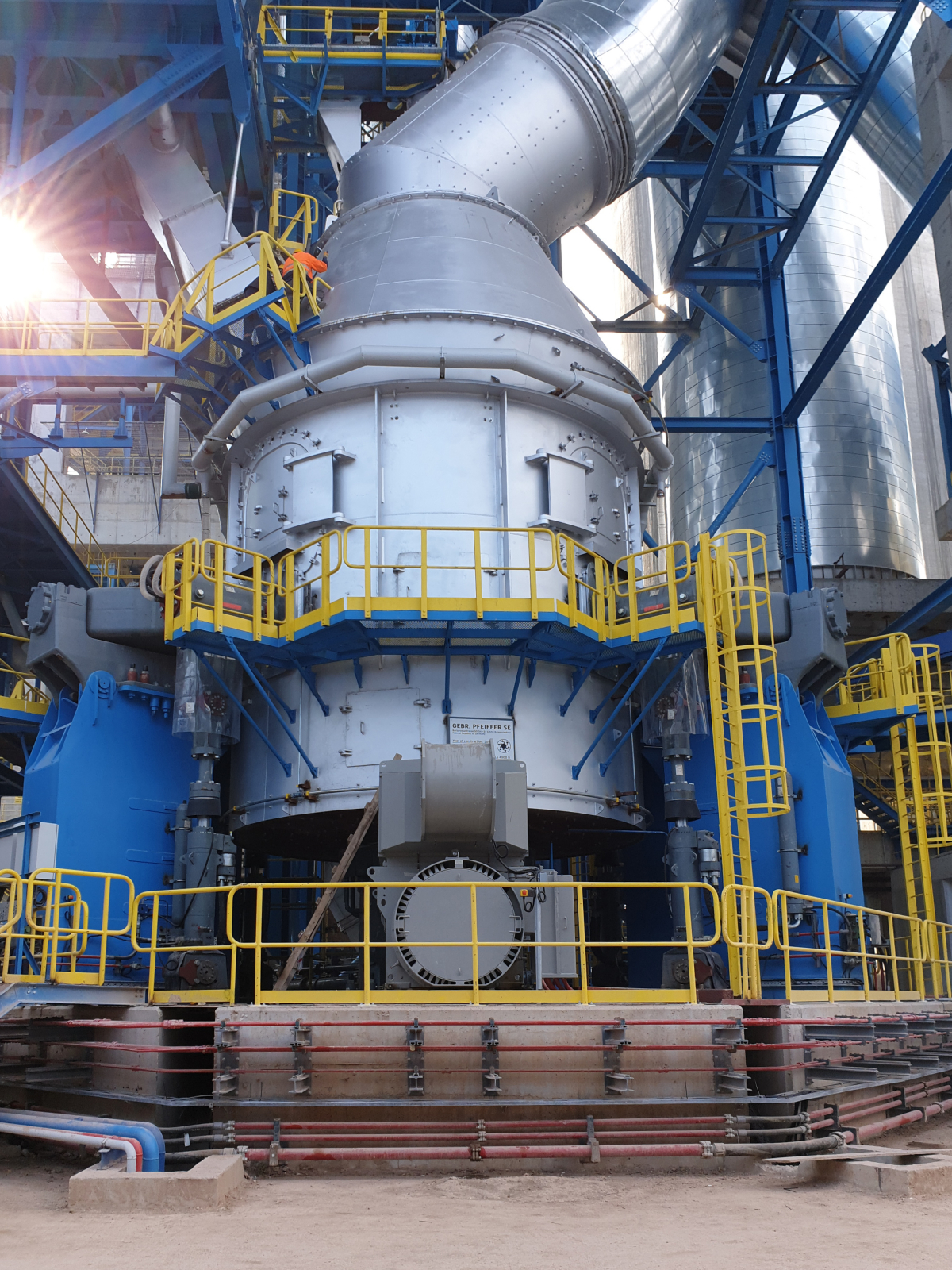Efficiency, sustainability and digitalization
Mathias Dülfer, Chairman of the Executive Board of Gebr. Pfeiffer SE, informed us in a five-question interview about the company‘s responses to current issues in the cement industry.
Compared to other grinding systems, vertical roller mills are characterized by lower maintenance and operating costs. This has been published many times by cement producers and has led to vertical roller mills being a core component of modern cement plants today. There they are used for grinding raw material, coal, pet coke, cement, blast furnace slag, limestone and puzzolona.
The Pfeiffer MVR vertical mill is associated in the industry with the term “active redundancy“. The grinding rollers of the mill are actively redundant, so production continues even if two of the up to six grinding rollers are swung out for maintenance. If the mill is equipped with a MultiDrive®, even individual rollers can be removed from operation. This is just as unique as the MultiDrive itself, because here not only the motors are redundant, as in other gearbox systems, because in the MultiDrive motors and gearboxes form several autonomous units. And each of these units can be removed from the system individually. So, it doesn‘t matter which component is under maintenance, the mill continues to operate and this is absolute unique.
Numerous results from the field also show that the MVR vertical roller mill in particular is characterized by extremely smooth running. This is due to its design and can therefore be seen across the entire product range.
This low vibration level further increases the availability of Pfeiffer grinding plants and also enables trouble-free production of ultra-fine products. For example, a CEM I with a specific surface of 5500 cm²/g (acc. to Blaine) is being produced in an MVR vertical roller mill in Brazil. These high-strength cements allow a reduced proportion of cement in the concrete or significantly smaller concrete parts, while maintaining the same loading capacity. Ultra-fine products are also produced with MVR mills for other industries. For example, limestone powder finer than 20 μm is also produced in a plant in Germany with such a vertical mill.
While we come from a market environment in which vibration velocities up to 2.5 mm/s were accepted for cement mills, the modern MVR cement mills usually run at vibration velocities around 0.5 mm/s and this brings many advantages for cement plant operators because less vibration means less fatigue. This results in higher availability, fewer unscheduled stops and an increased lifetime of the mill components.
Of course product development continues, because consistent product management has always been part of Gebr. Pfeiffer‘s philosophy. Thus, product evolution has now led to a further 10% increase in the power density of the current MVR series. In addition, the air loading was increased, resulting in a reduced gas volume flow in the plant and lower power consumption at the plant fan.
By means of consistent application and our in-house know-how in the field of Computational Fluid Dynamics, we have optimized the mill and classifier in cooperation with KIT Karlsruhe. These optimization activities also included the plant layout, especially the ducting design.
Using these multi-phase flow calculations, the separation efficiency of our classifiers has been further increased and pressure losses across the entire grinding plant reduced, which further reduces energy consumption. All calculation results were validated with the help of the test equipment in our own test station. It has also been possible to reduce the weight of the mills and mill foundations. For this, in addition to CFD software, the finite element method was also applied. This saves further energy, but also saves resources in general, as fewer raw materials have to be used. This example also clearly shows the smooth transition between efficiency and sustainability.
Efficient systems always also have a positive effect on sustainability. Here the transition is smooth, as raw materials and emissions are saved through system efficiency.
In addition to the listed energy savings with respect to Pfeiffer grinding systems, many cement manufacturers are also reducing the clinker content. Here, a clear trend toward increased use of clinker substitutes (SCMs) is evident. In this respect also calcined clay is gaining more and more attention, because the production of calcined clay causes less CO2 emissions than the production of clinker. In addition, the availability of granulated blast furnace slag and fly ash is decreasing in some regions. Cements with a clinker content of less than 30% are already being produced in Pfeiffer grinding plants. Further plants will be going into operation soon, in which the clinker content will be significantly reduced.
Pfeiffer vertical mills are highly flexible with regard to a wide variety of feed materials with different properties. Additional flexibility for an optimized plant design is provided by the consulting of process specialists. Especially here Gebr. Pfeiffer offers a wide range of experience to provide specific and adequate solutions. Examples of this are the injection of limestone meal after the mill classifier or our G4C unit. The last is one of our inventions. It enables the operators of cement grinding plants to actively influence the sulphate carrier phases in an external process with very low heat requirements. This enables the desired cement properties and cement handling to be adjusted optimally and very flexibly in a controlled process.
For us, sustainability also means brownfield projects with limited space and countless plant upgrades that have already been successfully realized. Here, the process know-how is of particular importance in order to be able to offer customers economical solutions in an advisory capacity. This can be a replacing of the top-mounted classifier, retrofitting of a G4C unit, modification of the tension system, installation of a grit discharge and much more.
Other topics include zero-carbon operation, energy recovery and the use of alternative fuels.
Here we have developed good concepts. We use hot gas generators and burner types in plants that can process almost all fuels (solid, liquid, gaseous) up to hydrogen considering recirculated air is being used as secondary air in the burner.
Water is also a valuable commodity. Depending on the feed material, a small amount of water should be added to the grinding bed, which also reduces the specific energy requirement during grinding. Our newly developed dynamic system reduces this water proportion to an absolute minimum by injecting as little water as possible into grinding gap of the mill using a digital control process.
There is also a lot of movement in this area and Gebr. Pfeiffer attaches great importance to this topic. With GPlink, we offer a digital product that saves sensor data for data analysis and in addition creates a solid connection to our support. This enables our experienced service experts to provide our customers with even more focused support.
With GPpro we have also created a digital Advanced Maintenance System, which enables preventive maintenance. The idea behind is no maintenance according to fixed intervals, but only according to actual needs, but plannable. This product includes an extended range of sensors and a data analysis tool as well as reports. We are also continuing to develop our GPpro, as the technology functions for topics like data analysis, preventive maintenance and mill protection are constantly being expanded.
We have also intensified our work on the topic of artificial intelligence to make this technology usable for optimized mill operation. Because one thing is clear, even the most experienced plant operator cannot coordinate as many operating parameters against each other as a digital product can do in many thousands of iteration steps. We see enormous potential here. Operators can preselect operating modes in the system, just like in the automotive industry, e.g. energy saving, maximum throughput, maintenance optimization, and the system calculates the ideal operating parameters according to these specifications. First operating results are very promising, as said before, in the field of digitalization many things will change, it remains exciting.
These are just a few of the topics that we use to keep our products and services fit for the future. There are also a number of other new developments we are working on, but it is not yet time to publish them.
We remain curious!

